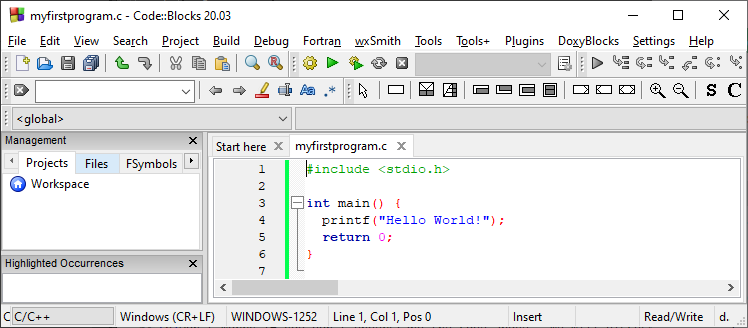INTRODUCTION TO C LANGUAGE | C PROGRAMMING 1
-
by anonymous
- 21
Introduction
C is a compiled language, which means that code written in C must be compiled into machine code before execution. The C language offers many features including low memory, simple keywords, and a small runtime library. C is also a portable language, which means that programs written in C can be compiled and executed on multiple platforms without modification.
Some of the basic features of C are:
2. Simple, yet powerful syntax
3. Small runtime library
4. Pointers and arrays for memory management
5. Preprocessor for coarse expansion and aggregation of conditions
C is a popular language for system-level programming, and application development in many other areas. Its influence on many other programming languages such as C++, Java, and Python.
What is C?
C is a general-purpose programming language created by Dennis Ritchie at the Bell Laboratories in 1972.
It is a very popular language, despite being old.
C is strongly associated with UNIX, as it was developed to write the UNIX operating system.
Why Learn C?
- It is one of the most popular programming language in the world
- If you know C, you will have no problem learning other popular programming languages such as Java, Python, C++, C#, etc, as the syntax is similar
- C is very fast, compared to other programming languages, like Java and Python
- C is very versatile; it can be used in both applications and technologies
Difference between C and C++
- C++ was developed as an extension of C, and both languages have almost the same syntax
- The main difference between C and C++ is that C++ support classes and objects, while C does not
Get Started
This tutorial will teach you the basics of C.
It is not necessary to have any prior programming experience.
Get Started With C
To start using C, you need two things:
- A text editor, like Notepad, to write C code
- A compiler, like GCC, to translate the C code into a language that the computer will understand
There are many text editors and compilers to choose from. In this tutorial, we will use an IDE (see below).
C Install IDE
An IDE (Integrated Development Environment) is used to edit AND compile the code.
Popular IDE’s include Code::Blocks, Eclipse, and Visual Studio. These are all free, and they can be used to both edit and debug C code.
Note: Web-based IDE’s can work as well, but functionality is limited.
We will use Code::Blocks in our tutorial, which we believe is a good place to start.
You can find the latest version of Codeblocks at http://www.codeblocks.org/. Download the mingw-setup.exe file, which will install the text editor with a compiler.
C Quickstart
Let’s create our first C file.
Open Codeblocks and go to File > New > Empty File.
Write the following C code and save the file as myfirstprogram.c (File > Save File as):
myfirstprogram.c
int main() {
printf(“Hello World!”);
return 0;
}
Don’t worry if you don’t understand the code above – we will discuss it in detail in later chapters. For now, focus on how to run the code.
In Codeblocks, it should look like this:

Then, go to Build > Build and Run to run (execute) the program. The result will look something to this:
Hello World!
Process returned 0 (0x0) execution time : 0.011 s
Press any key to continue.Congratulations! You have now written and executed your first C program.
Introduction C is a widely used programming language, originally developed by Dennis Ritchie at Bell Labs in the early 1970’s. C is a powerful and efficient language that is widely used to develop operating systems, device drivers, embedded systems, and other software that requires direct access to hardware C is a compiled…
Introduction C is a widely used programming language, originally developed by Dennis Ritchie at Bell Labs in the early 1970’s. C is a powerful and efficient language that is widely used to develop operating systems, device drivers, embedded systems, and other software that requires direct access to hardware C is a compiled…
